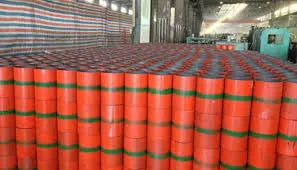- Afrikaans
- Albanian
- Amharic
- Arabic
- Armenian
- Azerbaijani
- Basque
- Belarusian
- Bengali
- Bosnian
- Bulgarian
- Catalan
- Cebuano
- Corsican
- Croatian
- Czech
- Danish
- Dutch
- English
- Esperanto
- Estonian
- Finnish
- French
- Frisian
- Galician
- Georgian
- German
- Greek
- Gujarati
- Haitian Creole
- hausa
- hawaiian
- Hebrew
- Hindi
- Miao
- Hungarian
- Icelandic
- igbo
- Indonesian
- irish
- Italian
- Japanese
- Javanese
- Kannada
- kazakh
- Khmer
- Rwandese
- Korean
- Kurdish
- Kyrgyz
- Lao
- Latin
- Latvian
- Lithuanian
- Luxembourgish
- Macedonian
- Malgashi
- Malay
- Malayalam
- Maltese
- Maori
- Marathi
- Mongolian
- Myanmar
- Nepali
- Norwegian
- Norwegian
- Occitan
- Pashto
- Persian
- Polish
- Portuguese
- Punjabi
- Romanian
- Russian
- Samoan
- Scottish Gaelic
- Serbian
- Sesotho
- Shona
- Sindhi
- Sinhala
- Slovak
- Slovenian
- Somali
- Spanish
- Sundanese
- Swahili
- Swedish
- Tagalog
- Tajik
- Tamil
- Tatar
- Telugu
- Thai
- Turkish
- Turkmen
- Ukrainian
- Urdu
- Uighur
- Uzbek
- Vietnamese
- Welsh
- Bantu
- Yiddish
- Yoruba
- Zulu
Understanding Tubing and Casing Specifications for API Standards
Understanding API Tubing and Casing Charts
In the oil and gas industry, the efficient extraction of hydrocarbons relies on various technical specifications and standards to ensure safety and productivity. One crucial aspect of this process is the use of tubing and casing, which are essential components for well construction, facilitating the safe transport of oil and gas from the formation to the surface. The American Petroleum Institute (API) plays a vital role in defining the standards and specifications for these materials, and understanding API tubing and casing charts is essential for professionals in the field.
What is Tubing and Casing?
Casing is a series of steel pipes that are installed in the wellbore to provide structural integrity and isolate different geological formations. This prevents the collapse of the wellbore and protects freshwater aquifers from contamination. On the other hand, tubing is inserted inside the casing and serves the purpose of transporting oil and gas from the reservoir to the surface. Tubing is typically smaller in diameter than casing, allowing it to be run inside the casing to efficiently transport fluids.
API Specifications and Standards
API provides specific standards for both tubing and casing, which include dimensions, material specifications, and performance requirements. These specifications are essential, as they ensure that the casing and tubing can withstand the harsh conditions encountered in oil and gas production, such as high pressures and corrosive environments.
The API specifications identify different grades of steel based on their strength and chemical composition. For example, the common grades for casing include API J55, K55, N80, and P110, each designed for different applications and well conditions. The API tubing grades are similarly categorized, with specifications that dictate the allowable yield strength, tensile strength, and other mechanical properties.
api tubing and casing chart

Deciphering the API Tubing and Casing Charts
API tubing and casing charts serve as comprehensive references for selecting the appropriate sizes and grades for specific applications. They typically provide information on outside diameters, wall thicknesses, joint lengths, and weights for various grades of tubing and casing. Understanding how to read these charts is essential for engineers and field operators when making decisions about which materials to use for a particular well.
For instance, the charts will indicate the maximum recommended depth for each type of casing based on their grade and weight. This information is critical for ensuring that the selected casing or tubing can handle the pressure and other environmental factors encountered during drilling and production.
Moreover, tubing and casing charts also enable professionals to calculate the equipment needed for installation and the potential production capabilities of wells. By understanding the relationships between surface conditions, well depths, and the properties of the tubing and casing, operators can optimize their drilling and production strategies.
Conclusion
In conclusion, API tubing and casing charts are invaluable resources for anyone involved in the oil and gas industry. They provide essential specifications and guidelines that ensure the safe and efficient design of wells. By understanding the various grades, strengths, and dimensions outlined in these charts, engineers and operators can make informed decisions that enhance production efficiency while maintaining safety standards. As the energy landscape continues to evolve, staying abreast of these technical specifications will remain crucial for the successful extraction of oil and gas resources.
-
Tubing Pup Joints: Essential Components for Oil and Gas OperationsNewsJul.10,2025
-
Pup Joints: Essential Components for Reliable Drilling OperationsNewsJul.10,2025
-
Pipe Couplings: Connecting Your World EfficientlyNewsJul.10,2025
-
Mastering Oilfield Operations with Quality Tubing and CasingNewsJul.10,2025
-
High-Quality Casing Couplings for Every NeedNewsJul.10,2025
-
Boost Your Drilling Efficiency with Premium Crossover Tools & Seating NipplesNewsJul.10,2025







